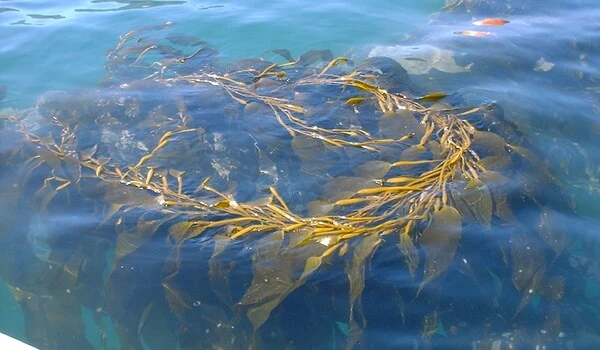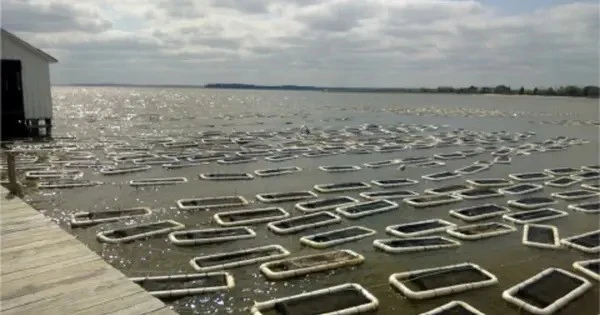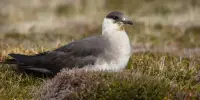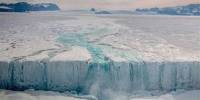Floating algae, often known as algal rafts or mats, can provide valuable habitat and nurseries for young pelagic (open-water) fish. These floating structures serve the baby fish in a variety of ways, helping them grow and survive. A recent Griffith University-led study discovered that floating macroalgae act as a raft, providing habitat for a varied range of juvenile saltwater fish.
The study, conducted in the Ningaloo Coast World Heritage Area, Western Australia, revealed that fish were more abundant around macroalgal rafts than in open water, with eleven species of juvenile fishes associated with Sargassum rafts and one species of both juveniles and adults.
“Floating macroalgal rafts form extensive habitat in coastal waters, supporting abundant and diverse communities of juvenile fishes in the open ocean where structure and food can be sparse,” said lead author Mr Samuel Mazoudier, an Honours candidate at the Coastal & Marine Research Centre and the Australian Rivers Institute.
Macroalgal rafts generally form when algae that is attached to the sea floor is dislodged during storms and floats to the surface with the aid of pneumatocysts (air bladders).
Floating macroalgal rafts form extensive habitat in coastal waters, supporting abundant and diverse communities of juvenile fishes in the open ocean where structure and food can be sparse.
Mr Samuel Mazoudier
“In the Ningaloo Coast World Heritage Area rafts are commonly comprised of Sargassum spp., a species of macroalgae that grows abundantly on coral reefs but that sometimes detaches from the seafloor during storms,” said lead researcher Professor Kylie Pitt, Coastal & Marine Research Centre and the Australian Rivers Institute.
“Once detached, the buoyant algae float at the ocean’s surface where currents can cause the algae to converge into extensive rafts. These rafts attract large numbers of juvenile fish and other animals and are a potentially important transitional habitat for pre-settlement coastal fishes.”
“Macroalgal rafts can exceed a square kilometre when currents or wind cause individual algae to converge, thus providing extensive habitat in some regions, and are thus important for supporting biodiversity in marine ecosystems.”

This study, in addition to quantifying the diversity and abundance of fishes associated with Sargassum rafts at six sites in the Ningaloo Marine Park, used stable isotopes to determine whether what fish associated with the algal rafts ate or preyed on.
“Ultimately, we wanted to find out whether the food web that supported fish around the algal rafts was dependent on the primary production of Sargassum algal itself or phytoplankton,” said Professor Pitt.
Four of the five types of fish most sampled around the algal rafts had generalist diets whose food webs were predominantly supported by primary production from Sargassum spp. (55-72%) as opposed to plankton. While only small algal rafts less than a metre square were sampled in this study, they supported large numbers of juvenile fishes.
“More than 80 fish were observed around a single floating alga,” said Mr Mazoudier. “Much larger rafts exceeding 100 metres squared also form in this region and can attract larger animals, including adult squid. The prevalence of juvenile fishes around Sargassum rafts highlights a two-directional benthic-pelagic interaction where macroalgae that detach from the sediment of coastal regions provides habitat and acts as the initial food source for pelagic juvenile fishes, which will eventually move back into benthic coastal habitats, where the algal mats originated.”
“This study demonstrates the relevance of algal rafts as transitional habitats that give refuge and food to juvenile fish before they settle in coastal areas, as well as some adult fish. However, a much more extensive research of the temporal and geographical dynamics of these rafts, the animals that live them, and the ability of rafts to transport and recruit coastal fishes by drifting over long distances is required.”
















